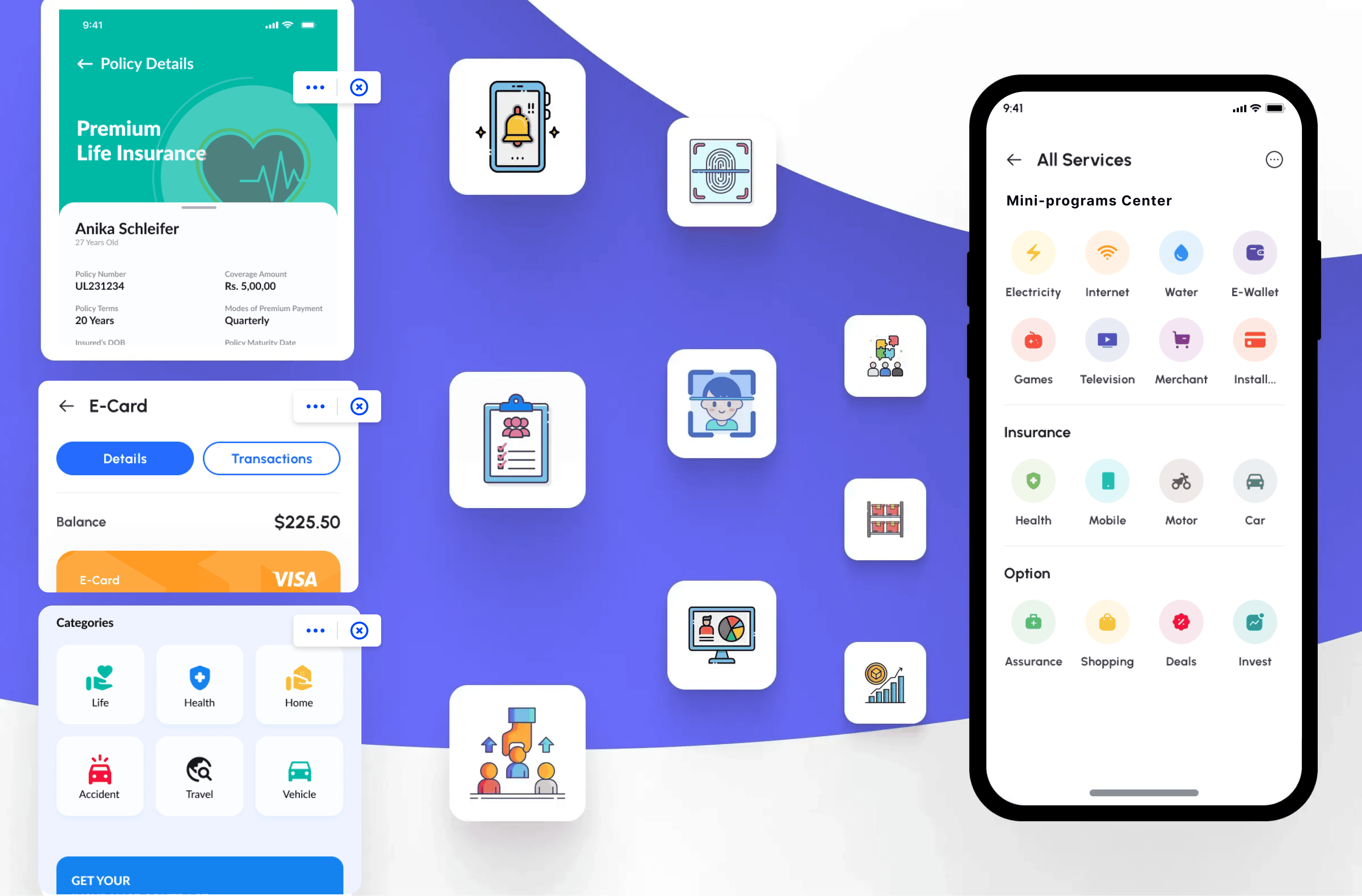10 Best Cross Platform Frameworks For Mobile App Development In 2024
Undoubtedly, cross-platform app development in 2024 presents the most cost-effective way to reach a broad audience. In today's rapidly evolving technology landscape, both web and mobile app development methods continue to evolve.
The app market is fiercely competitive, boasting over 2.47 million apps on Google Play Store and 1.8 million on the Apple App Store. With 6.6 billion smartphone users worldwide, businesses cannot afford to neglect the dominant mobile platforms – Android and iOS.
As cross-platform app development gains traction, numerous frameworks have emerged in the market, attracting attention from mobile app development companies eager to capitalize on this versatile and cost-efficient technology. These frameworks allow developers to maintain a single codebase, making them more affordable compared to native app development. By targeting multiple platforms with one codebase, developers can reach a larger audience of users who use different devices and operating systems, without the need for separate development efforts. This allows businesses get faster time to market.
You may be wondering how to select the optimal framework for your app development needs. This blog aims to assist you in this decision-making process. We have curated a list of top frameworks for iOS and Android mobile app development that will empower your business expansion in 2024.
Before delving into the specifics of various cross-platform frameworks and their advantages for your development workflow, let's first explore what cross-platform app development is.
What Is a Cross-Platform App Development Framework?
To be concise, cross-platform software refers to applications designed to run on multiple computing platforms, such as Android, iOS, Windows, and others. Unlike traditional native app development that requires separate coding for each platform, cross-platform frameworks allow developers to write code once and deploy it across different platforms. This significantly reduces development time and costs, making it a preferred choice for many top mobile app development companies today.
How Cross-Platform App Development Works?
Cross-platform app development leverages frameworks and tools that facilitate code sharing across multiple platforms. Instead of maintaining separate codebases for each platform, developers utilize a single codebase to create applications that appear and function natively on diverse operating systems. This unified approach not only streamlines the development process but also ensures a consistent user experience across all devices.
Frameworks like Flutter, React Native, Xamarin, and Ionic are pivotal in cross-platform development. They provide developers with the necessary tools, libraries, and APIs to build robust applications that mimic the performance and aesthetics of native apps. These frameworks typically support popular programming languages such as JavaScript, TypeScript, Dart, or C#, allowing developers to write code that can be compiled into native code for each targeted platform.
Top 10 Cross-Platform App Development Frameworks For Mobile App Development
1. Flutter

Flutter, introduced by Google in 2017, is a powerful cross-platform app framework designed to accelerate Android and iOS app development. It also serves as a primary method for creating apps for Google's Fuchsia operating system.
Flutter stands out in the realm of cross-platform development due to its ability to produce apps that run seamlessly and dynamically across multiple platforms. Its robust features and capabilities have made it a favorite among developers worldwide.
Flutter is renowned for its cost-effectiveness and efficiency in building cross-platform applications. According to Statista, nearly 46% of developers prefer using Flutter, highlighting its popularity and widespread adoption in the developer community and industry.
At its core, Flutter comprises an SDK (Software Development Kit) and a widget-based UI library. This library includes a plethora of reusable UI elements such as buttons, sliders, and text inputs, which streamline the app development process and ensure consistency across different platforms.
With Flutter, developers can create visually appealing and high-performance apps with native-like experiences, all while leveraging a single codebase. This capability not only accelerates time-to-market but also reduces development costs significantly compared to traditional native app development approaches.
Features of Flutter
Flutter leverages a portable GPU rendering UI power, enabling smooth performance across diverse interfaces, including the latest platforms.
Its reactive framework eliminates the need for manual UI updates. Developers simply update variables, and Flutter automatically reflects these changes in the UI, ensuring efficient and responsive app development.
Ideal for Minimum Viable Product (MVP) development, Flutter accelerates the process with its expedient development capabilities and cost efficiency.
Developers benefit from Flutter's ability to automatically rebuild the widget tree, facilitating quick adjustments to code without manual intervention.
With an integrated graphics engine, Flutter streamlines the UI creation process, eliminating the need for separate interfaces for Android and iOS, thereby simplifying development and ensuring consistent app performance across platforms.
Flutter's comprehensive feature set and robust performance make it a preferred choice among developers seeking to create high-quality, visually appealing cross-platform applications efficiently and effectively. Its versatility and ease of use continue to attract a growing community of developers and businesses alike, shaping the future of mobile app development.
2. React Native
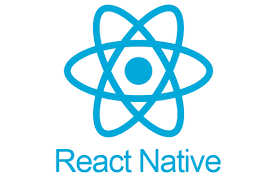
React Native, introduced by Facebook in 2015, stands as a cornerstone in the realm of cross-platform app development frameworks. Built on JavaScript, React Native enables developers to write real code that provides a native-like experience for mobile applications on both Android and iOS platforms.
Key Features and Advantages
React Native's appeal lies in its ability to combine the efficiency of JavaScript with the native performance of mobile apps. This unique blend not only streamlines the development process but also ensures that apps maintain a consistent look and feel across different operating systems.
One of React Native's standout features is its capability to share a substantial portion of code across platforms. This feature significantly reduces development time and costs, making it an attractive choice for developers and businesses alike.
The framework's versatility extends to its integration capabilities. Developers can seamlessly incorporate React Native components into existing app codebases or repurpose Cordova-based code with plugins. This flexibility empowers developers to leverage existing resources and accelerate the development of cross-platform applications.
Businesses recognize React Native as a reliable platform for building robust and scalable mobile applications. Its comprehensive features, combined with strong community support, make it a preferred choice in the competitive landscape of cross-platform app development.
3. Ionic

Ionic is widely recognized as a leading cross-platform app framework built on AngularJS. Developers harness a combination of HTML5, JavaScript, and CSS, along with a Cordova wrapper for native platform access. This framework excels in crafting highly interactive and native-like user interfaces, ideal for feature-rich applications and Progressive Web App (PWA) development.
Introduced in 2013 by Drifty Co., Ionic is renowned for its versatility and open-source nature, enabling developers to write code once and deploy it seamlessly across Windows, iOS, and Android platforms. Over the years, Ionic has evolved through successive updates, enhancing its toolkit with new features tailored to meet developers' evolving needs.
Its robust SDK and continuous innovation have made Ionic a preferred choice for cross-platform mobile app development, empowering developers to create innovative and engaging applications across a wide range of devices and operating systems.
Key Features and Advantages of Ionic
Open-Source Framework: Ionic is an open-source front-end framework that empowers developers to customize its code structure, saving substantial development time and offering flexibility in application design.
SAAS UI Framework: Built on a SAAS UI framework tailored for mobile operating systems, Ionic provides a comprehensive suite of UI components essential for creating robust and visually appealing applications.
Integration with AngularJS: Leveraging AngularJS integration, Ionic extends HTML syntax to enhance core functionalities, enabling developers to seamlessly incorporate attractive and useful features into their apps.
Cordova Plugins: By integrating Cordova plugins, Ionic facilitates access to native device features such as Camera, GPS, and Audio Recorder. This enhances the capabilities of cross-platform development tools and broadens the functionality of Ionic-powered apps.
Native-Like User Experience: Ionic ensures a native-like user experience across iOS, Android, and other platforms, employing platform-specific UI elements and design patterns. This consistency enhances usability and performance across diverse devices.
4. Xamarin

Xamarin, developed by Microsoft in May 2011, stands out as a robust framework built on the Microsoft technology stack. It boasts efficiency by enabling developers to share up to 90% of their codebase across major platforms. Supported by a vast community of over 1.4 million developers, Xamarin ensures prompt issue resolution and continuous support.
Key Features and Advantages of Xamarin
Xamarin's strength lies in its native-friendly interface and controls, simplifying the creation of cross-platform apps that deliver a seamless native experience. Integrated with Visual Studio, Xamarin facilitates streamlined app development for Windows, iOS, and Android platforms.
Unlike traditional frameworks based on JS libraries and HTML, Xamarin utilizes C# and .NET for developing apps across multiple platforms. This approach allows developers to maximize code reuse, using up to 90% of the same codebase to build applications for Android, Windows, and iOS.
Xamarin's integration capabilities with Visual Studio enhance development workflows, making it a preferred choice for developers aiming to create efficient and high-performance cross-platform mobile applications.
In summary, Xamarin offers a powerful solution for developers seeking to leverage Microsoft technologies to build native-quality apps across various platforms efficiently and effectively. Its extensive community support and seamless integration with Visual Studio contribute to its popularity in the realm of cross-platform app development frameworks.
5. Kotlin Multiplatform
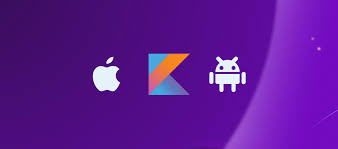
Kotlin Multiplatform is an open-source technology designed by JetBrains for cross-platform mobile app development. It extends the Kotlin language, enabling developers to share business logic and code across multiple platforms. This approach accelerates development timelines and minimizes potential bugs.
Key Features and Advantages of Kotlin Multiplatform
Unlike other frameworks, Kotlin Multiplatform does not enforce a specific architecture or UI framework, allowing developers to utilize native UI technologies. This flexibility ensures that apps built with Kotlin Multiplatform look and perform like native applications, enhancing user experience.
Initially introduced as part of Kotlin in 2017, Kotlin Multiplatform has gained traction for its capability to facilitate genuine code sharing between Android and iOS platforms while supporting platform-specific implementations when needed.
By leveraging the Kotlin programming language, Kotlin Multiplatform enables seamless code sharing across Android, iOS, and web platforms. Its popularity among professional Android developers, with over 60% adoption rate, underscores its effectiveness and appeal in the mobile app development community.
In essence, Kotlin Multiplatform empowers developers to streamline cross-platform app development by maximizing code reuse while accommodating platform-specific requirements, making it a versatile solution for modern mobile app projects.
6. NativeScript

NativeScript is a prominent open-source cross-platform framework recognized for its capability to develop native-like applications. Originally developed by Progress in 2014 and later acquired by nStudio, a long-term partner of Progress, in 2019, NativeScript supports JavaScript and TypeScript, offering versatility for developers.
Using JavaScript, TypeScript, or Angular, NativeScript provides direct access to all native platform APIs. This enables developers to leverage device features such as cameras, GPS, and sensors. The framework includes a robust set of plugins and modules that extend its functionality, allowing seamless integration of native capabilities into apps across iOS, Android, and the web.
Key Features and Advantages of NativeScript
NativeScript empowers developers to create apps that provide a native experience across iOS, Android, and the web using JavaScript, TypeScript, or Angular. It offers direct access to native platform APIs, enabling integration with device features such as cameras, GPS, and sensors seamlessly.
Unlike frameworks relying on WebViews, NativeScript delivers beautiful, accessible, and platform-native UI components. Developers define UI elements once and customize them for specific devices and screens, ensuring consistent user experiences.
The framework includes a rich set of plugins and modules that extend its functionality, eliminating dependencies on third-party solutions. It supports easy reuse of existing plugins from NPM directly into projects, enhancing development efficiency.
NativeScript simplifies access to native Android and iOS APIs without requiring extensive knowledge of native development languages. It leverages Angular and TypeScript for programming, supporting integration with platforms like Cocoapods and AndroidArsenal for streamlined workflows.
In summary, NativeScript is a preferred choice among developers for its robust capabilities in building cross-platform applications with native-like performance, leveraging familiar technologies and facilitating seamless access to native APIs across different platforms.
7. Node.js
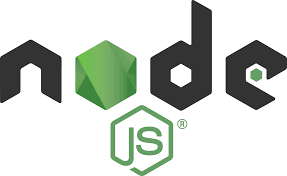
Node.js is a powerful open-source runtime environment that allows developers to run JavaScript code outside of a web browser. It is built on Chrome's V8 JavaScript engine and uses an event-driven, non-blocking I/O model that makes it lightweight and efficient for building scalable network applications. Node.js is particularly popular for creating server-side applications, APIs, real-time applications (like chat applications or gaming servers), and microservices.
Key Features and Advantages of Node.js
Asynchronous and Event-Driven: Node.js uses asynchronous programming, which allows multiple operations to be executed concurrently without waiting for completion. This makes it highly efficient for handling multiple requests simultaneously.
Single-threaded and Non-blocking: Node.js operates on a single-threaded event loop, which enables handling multiple concurrent connections efficiently. It uses non-blocking I/O operations, ensuring that other operations can continue while waiting for I/O operations to complete.
JavaScript Everywhere: Node.js allows developers to use JavaScript for both server-side and client-side development, enabling full-stack JavaScript applications.
V8 Engine: Node.js is built on the V8 JavaScript engine, which is known for its speed and performance. It compiles JavaScript directly into machine code, making Node.js applications fast and efficient.
Large Ecosystem: Node.js has a rich ecosystem of libraries and frameworks available through its package manager, npm (Node Package Manager). This vast ecosystem provides tools for various functionalities, enhancing developer productivity and speeding up development cycles.
Scalability: Node.js applications are highly scalable due to their non-blocking, event-driven architecture. They can handle a large number of simultaneous connections efficiently, making Node.js suitable for building scalable network applications.
8. Corona SDK

Corona SDK, now known as Solar2D, is a cross-platform framework used for mobile app development. It enables developers to create applications for iOS, Android, and even desktop platforms like Windows and macOS using a single codebase written in Lua programming language. Lua is a lightweight and efficient scripting language that is easy to learn and use.
Key Features of Corona SDK
Corona SDK allows developers to build mobile apps for iOS and Android platforms from a single codebase. It also supports building applications for desktop platforms such as Windows and macOS.
Lua Scripting Language: Developers write applications in Lua, a powerful and easy-to-learn scripting language. Lua is known for its speed, simplicity, and flexibility, making it suitable for game development and other interactive applications.
Rich Set of APIs: Corona SDK provides a rich set of APIs and libraries that simplify common tasks such as graphics rendering, audio playback, and user input handling. These APIs allow developers to create visually appealing and interactive applications quickly.
Built-in Simulator: Corona SDK includes a built-in simulator that allows developers to test their applications directly on their computers without needing physical devices. This speeds up the development and debugging process.
Plugins and Extensions: Developers can extend the functionality of their applications by integrating plugins and extensions available through the Corona Marketplace. These plugins cover a wide range of features including analytics, social media integration, and monetization options.
Community and Support: Corona SDK has an active community of developers who contribute tutorials, plugins, and support through forums and online resources. This community-driven support network helps developers solve problems and share knowledge.
In summary, Corona SDK (Solar2D) is a versatile cross-platform framework for mobile and desktop app development, leveraging Lua programming language to provide a streamlined development experience with robust capabilities for creating interactive and visually appealing applications.
9. Sencha Touch
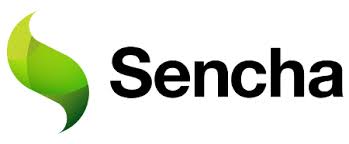
Sencha Touch was a framework developed by Sencha for creating cross-platform mobile web applications. It allowed developers to build mobile app interfaces using web technologies such as HTML5, CSS3, and JavaScript. Sencha Touch was based on the Model-View-Controller (MVC) architecture, which helps in organizing code and separating concerns. Introduced nearly a decade ago, Sencha Touch facilitates the development of web-based cross-platform apps, leveraging hardware acceleration techniques for efficient performance. Developers use Sencha Touch to create well-tested UI components and libraries that are securely integrated into applications.
Key Features of Sencha Touch
Cross-Platform Development: Sencha Touch enabled developers to build cross-platform mobile applications using web technologies like HTML5, CSS3, and JavaScript. This allowed apps to run seamlessly on different platforms such as iOS, Android, and others.
Model-View-Controller (MVC) Architecture: The framework was structured around the MVC pattern, promoting a clean separation of concerns between data (Model), presentation (View), and application logic (Controller). This architectural approach helped in organizing and maintaining code efficiently.
Rich User Interface Components: Sencha Touch offered a comprehensive suite of UI components optimized for touch-based interactions. These included buttons, lists, forms, toolbars, and menus, which could be easily customized and themed according to application requirements.
Data Integration: It provided powerful data integration capabilities, allowing developers to connect their applications to various data sources such as RESTful APIs and JSON services. This facilitated fetching, storing, and displaying data within the application.
Hardware Acceleration: Sencha Touch utilized hardware acceleration techniques to leverage device capabilities, thereby enhancing performance and ensuring smooth user experiences, especially in graphics-intensive applications.
Theming and Customization: Developers could create visually appealing applications by customizing themes and stylesheets. Sencha Touch offered built-in theming support, allowing for consistent branding across different platforms.
Built-in Tools and Debugging: The framework included tools for debugging and testing applications, aiding developers in identifying and resolving issues quickly during the development process. This helped in optimizing the performance and reliability of Sencha Touch applications.
10. Adobe PhoneGap
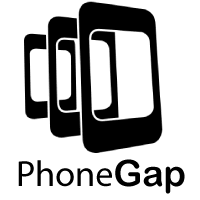
Adobe PhoneGap, now known as Apache Cordova, is a popular open-source mobile development framework that enables developers to create cross-platform mobile applications using web technologies such as HTML, CSS, and JavaScript. Originally developed by Nitobi and later acquired by Adobe, PhoneGap simplifies the process of building mobile apps that can run on multiple platforms with a single codebase.
Key Features of Adobe PhoneGap:
Cross-Platform Compatibility: PhoneGap allows developers to write code once and deploy it across various mobile platforms like iOS, Android, Windows Phone, and more. This reduces development time and effort compared to building separate native apps for each platform.
Web Technology Stack: Developers can leverage standard web technologies such as HTML5, CSS3, and JavaScript, which are well-known and widely used, making PhoneGap accessible to a broad range of developers.
Access to Native APIs: PhoneGap provides a bridge that allows web applications to access native device APIs (Application Programming Interfaces). This means developers can integrate device features like camera, accelerometer, geolocation, contacts, and more into their applications.
Plugin Architecture: The framework supports a plugin architecture that extends its functionality. Developers can choose from a wide range of plugins to add specific features to their apps or create custom plugins as needed.
Ease of Development: PhoneGap simplifies the app development process by providing tools and workflows that are familiar to web developers. It allows developers to use their existing skills and tools to build mobile applications.
Integration with Adobe Ecosystem: Historically, PhoneGap has been associated with Adobe's ecosystem, offering integration with tools like Adobe Dreamweaver for visual design and Adobe Analytics for app analytics.
Community and Support: As an open-source project, PhoneGap has a large community of developers who contribute plugins, offer support, and share knowledge. This community-driven approach ensures ongoing updates and improvements to the framework.
Deployment Flexibility: Apps built with PhoneGap can be deployed through app stores like Apple App Store, Google Play Store, and Microsoft Store, just like native applications.
Exploring FinClip: A Revolutionary Small Program Container Technology For Cross-Platform App Development
FinClip is a small program container technology developed by Finogeeks, also known as a small program sandbox Runtime/Engine. It provides a Runtime based on a browser kernel, utilizing dynamic language (JS) and declarative View construction (XML), compatible with mainstream internet small program technologies, and can adopt DSL frameworks based on Vue and React.
Strictly speaking, FinClip is a container technology. It not only does not conflict with cross-platform technology but also integrates perfectly with it. Small programs developed through Flutter, React Native, Ionic, and other frameworks can all run within FinClip.
This small program container technology also brings many benefits by separating the view layer from the logic layer:
Facilitates data sharing and interaction between multiple small program pages. Having the same context throughout the lifecycle of the small program provides developers with a familiar coding experience, especially those with a background in native application development.
The separation and parallel implementation of Service and View prevent JS execution from affecting or slowing down page rendering, thus improving rendering performance.
Because JS executes in the Service layer, operations on DOM in JS will not affect the View layer. This means small programs cannot manipulate DOM structures, which also improves performance compared to traditional H5.
Cross-platform app development is gaining momentum, and partnering with a reliable company can provide businesses with the expertise and resources needed to realize their multi-platform app ideas. Whether you're developing a healthcare app, transforming education with a new platform, or innovating in fintech, choosing the appropriate cross-platform framework and development strategies is crucial for success in today's competitive market. Contact us now for a complimentary consultation on tailored multi-platform app development strategies that meet your specific needs.



